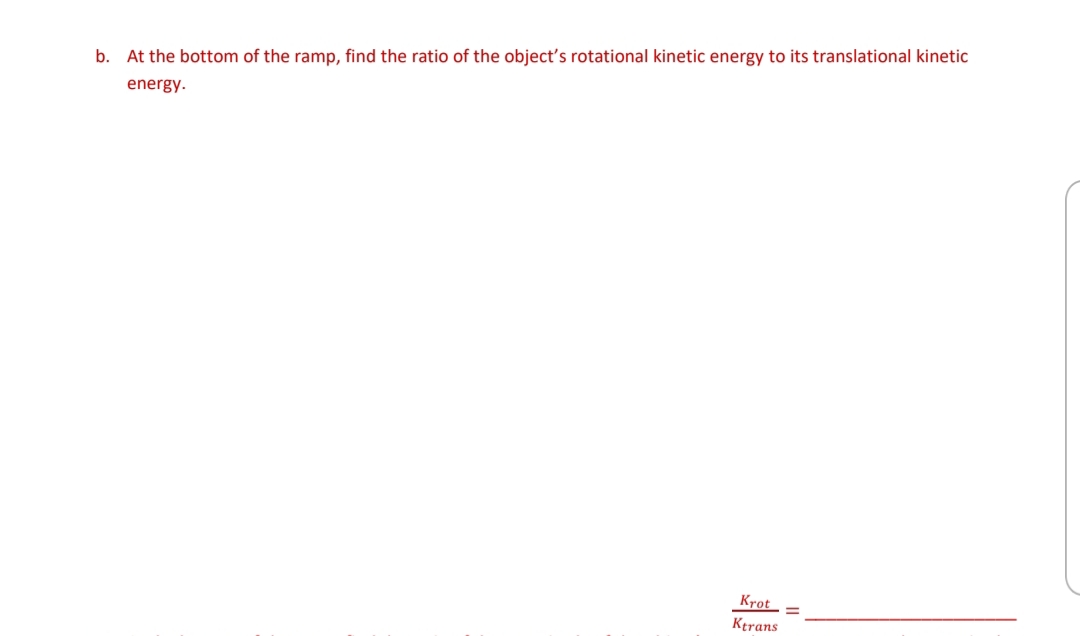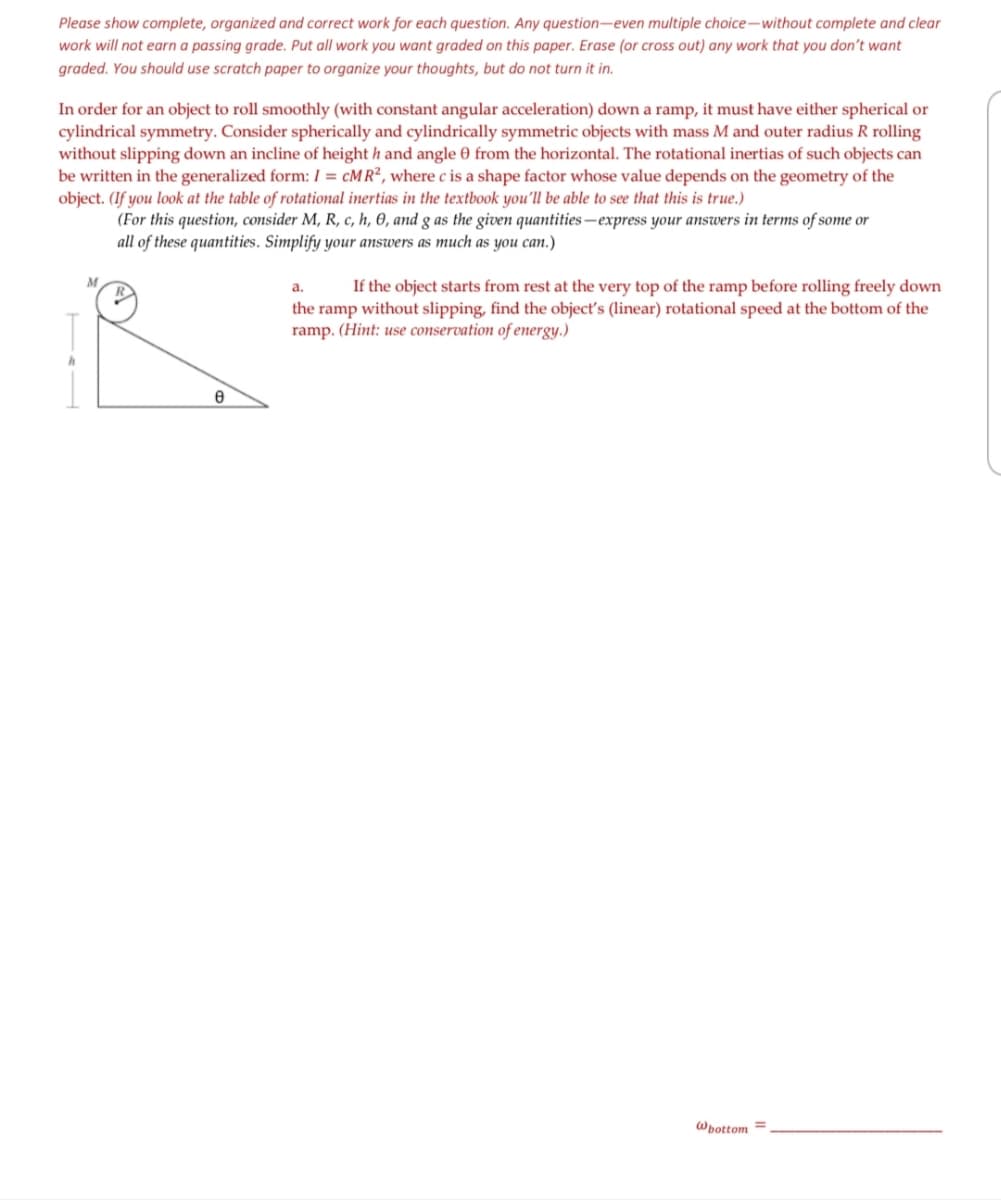In order for an object to roll smoothly (with constant angular acceleration) down a ramp, it must have either spherical or cylindrical symmetry. Consider spherically and cylindrically symmetric objects with mass M and outer radius R rolling without slipping down an incline of height h and angle 0 from the horizontal. The rotational inertias of such objects can be written in the generalized form: / = CMR² , where c is a shape factor whose value depends on the geometry of the object. (If you look at the table of rotational inertias in the textbook you'll be able to see that this is true.) (For this question, consider M, R, c, h, 0, and g as the given quantities -express your answers in terms of some or all of these quantities. Simplify your answers as much as you can.) M a. If the object starts from rest at the very top of the ramp before rolling freely down the ramp without slipping, find the object's (linear) rotational speed at the bottom of the ramp. (Hint: use conservation of energy.)
In order for an object to roll smoothly (with constant angular acceleration) down a ramp, it must have either spherical or cylindrical symmetry. Consider spherically and cylindrically symmetric objects with mass M and outer radius R rolling without slipping down an incline of height h and angle 0 from the horizontal. The rotational inertias of such objects can be written in the generalized form: / = CMR² , where c is a shape factor whose value depends on the geometry of the object. (If you look at the table of rotational inertias in the textbook you'll be able to see that this is true.) (For this question, consider M, R, c, h, 0, and g as the given quantities -express your answers in terms of some or all of these quantities. Simplify your answers as much as you can.) M a. If the object starts from rest at the very top of the ramp before rolling freely down the ramp without slipping, find the object's (linear) rotational speed at the bottom of the ramp. (Hint: use conservation of energy.)
Related questions
Question
Question B. Show all steps please.

Transcribed Image Text:b. At the bottom of the ramp, find the ratio
the object's rotational kinetic energy to its translational kinetic
energy.
Krot
Kerans

Transcribed Image Text:Please show complete, organized and correct work for each question. Any question-even multiple choice-without complete and clear
work will not earn a passing grade. Put all work you want graded on this paper. Erase (or cross out) any work that you don't want
graded. You should use scratch paper to organize your thoughts, but do not turn it in.
In order for an object to roll smoothly (with constant angular acceleration) down a ramp, it must have either spherical or
cylindrical symmetry. Consider spherically and cylindrically symmetric objects with mass M and outer radius R rolling
without slipping down an incline of height h and angle 0 from the horizontal. The rotational inertias of such objects can
be written in the generalized form: / = cMR², where c is a shape factor whose value depends on the geometry of the
object. (If you look at the table of rotational inertias in the textbook you'll be able to see that this is true.)
(For this question, consider M, R, c, h, 0, and g as the given quantities –express your answers in terms of some or
all of these quantities. Simplify your answers as much as you can.)
M
a.
If the object starts from rest at the very top of the ramp before rolling freely down
the ramp without slipping, find the objecťs (linear) rotational speed at the bottom of the
ramp. (Hint: use conservation of energy.)
Whottom =
Expert Solution
This question has been solved!
Explore an expertly crafted, step-by-step solution for a thorough understanding of key concepts.
This is a popular solution!
Trending now
This is a popular solution!
Step by step
Solved in 3 steps with 3 images
